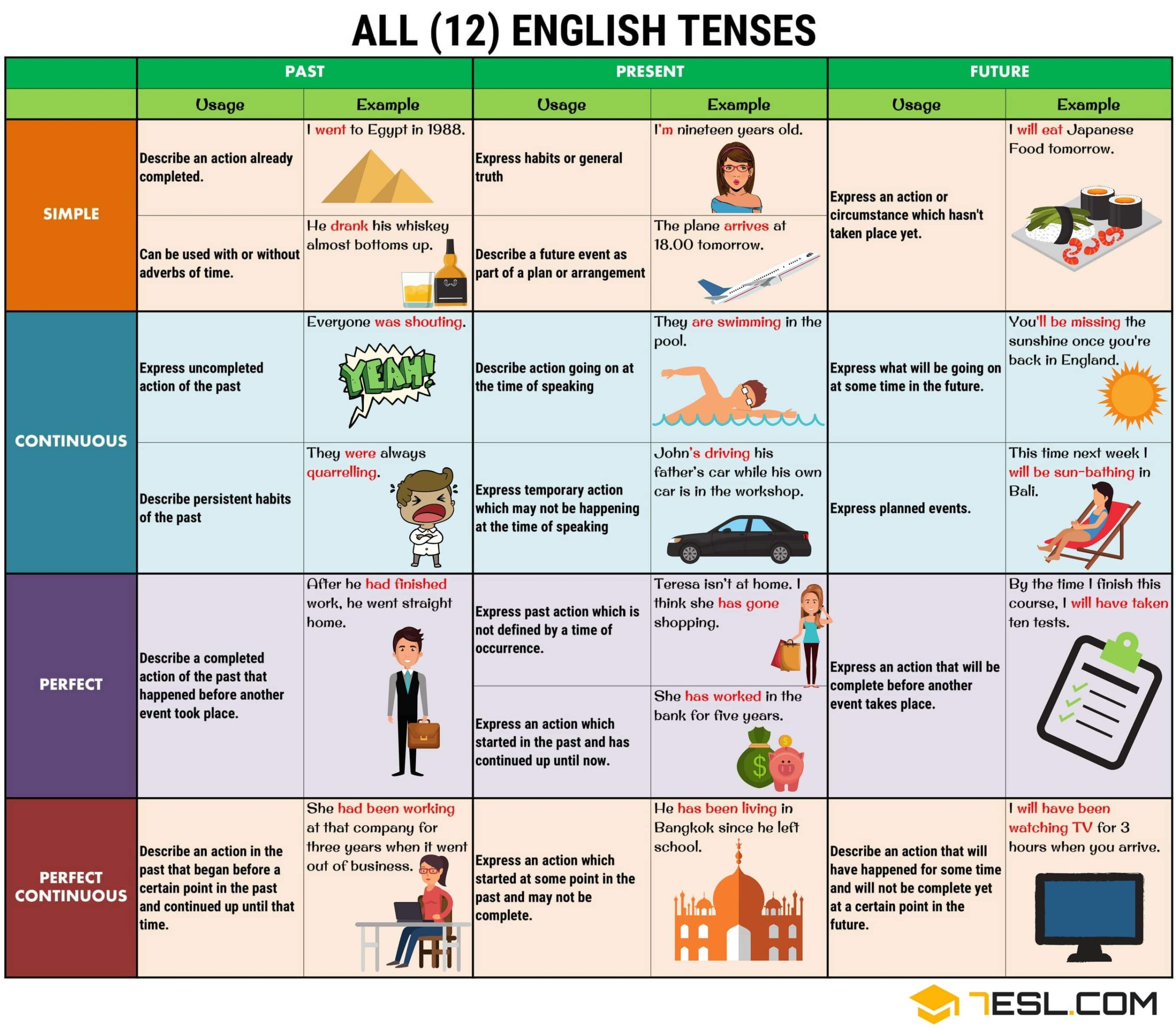Understanding verb tenses is crucial for effective communication in English. Verbs are the backbone of sentences, indicating the time and action of a sentence. By mastering verb tenses, you can convey precise information about when an action took place or will take place.
English has 12 main verb tenses, each serving a specific purpose in conveying the timing of an action. These tenses are categorized into three main categories: past, present, and future. Each category is further divided into simple, continuous, perfect, and perfect continuous tenses.
Verb Tenses Chart:
1. Present Simple: I eat
2. Present Continuous: I am eating
3. Present Perfect: I have eaten
4. Present Perfect Continuous: I have been eating
5. Past Simple: I ate
6. Past Continuous: I was eating
7. Past Perfect: I had eaten
8. Past Perfect Continuous: I had been eating
9. Future Simple: I will eat
10. Future Continuous: I will be eating
11. Future Perfect: I will have eaten
12. Future Perfect Continuous: I will have been eating
Each verb tense serves a specific purpose in expressing the timing of an action. For example, the present simple tense is used for general truths or habits, while the present continuous tense is used for actions happening at the moment of speaking. The present perfect tense is used for actions that started in the past and continue into the present.
Understanding and using verb tenses correctly can enhance the clarity and effectiveness of your communication. By practicing and familiarizing yourself with the verb tenses chart, you can improve your English language skills and become a more proficient communicator.
In conclusion, mastering verb tenses in English is essential for effective communication. By understanding the various verb tenses and their purposes, you can convey precise information about the timing of actions. Practice using the verb tenses chart and incorporate them into your daily language use to enhance your English proficiency.
